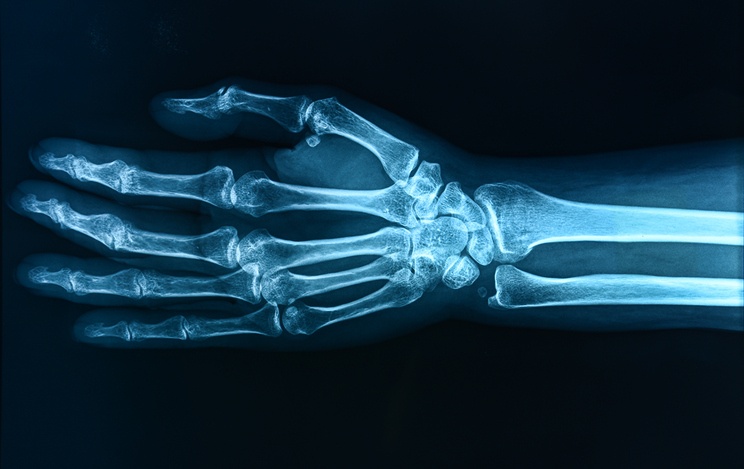
Dr. Sherman a Board Certified Physician whose specialty is Diagnostic Radiology that joined Derry Imaging in 2009. “I started 8 years ago. The radiology practice that I joined out of training had a long-standing relationship with Derry Medical and Derry Imaging even before Derry Imaging was formed. My radiology group has been providing services there since its inception. It was a natural transition to join Derry Imaging,” said Dr. Sherman.
Before starting work with us, he obtained his Doctor of Medicine degree from State University of New York and did his residency at Fletcher Allen Health Care in Vermont and completed a Fellowship in MRI at the University of Rochester. Dr. Sherman is a highly specialized Doctor with training in multiple areas including Musculoskeletal Imaging.
Dr. Sherman is not alone at Derry Imaging when it comes to specialized radiologists and in-depth experience. He noted, “I am the junior member of my group and I have 8 years of experience, but some of the providers have up to 30 years of experience. We have various ranges of expertise that really run the gamut of radiology.”
In fact, Dr. Sherman is part of a core group of on-site radiologists at Derry Imaging, which definitely offers distinct advantages to patients. He said, “The benefits are many! We do a lot of minor procedures so our presence is needed for that. Some places don’t offer that. It’s very convenient and efficient and it costs significantly less than the hospital. When we do various diagnostic imaging studies or if an extra study needs to be done we can do it right there. We can tailor it to the order or question that is being asked. If there is a medical issue with any of the patients and they need to be assessed so that they can either go to the hospital or go home we can do that too. It allows us to do more things like various contrast exams that other places couldn’t offer due to the need for monitoring.”
Having radiologists, and further more — specialized radiologists on-site is a great advantage for patients as they are better image-readers (purely based on experience) than primary care physicians. He said, “General Radiologists are specialist physicians. Fellowship trained Radiologists, of which all in my group are, have additional sub-specialty training of 1-2 years. During the extra fellowship year(s) it’s all in one modality or specialty area of radiology.”
There is a true night and day difference between a primary care doctor reading images and a radiologist reading images. Dr, Sherman said, “This is the result of residency training programs and what they are designed to train people to do. For example all radiologists do during their residency training (1 year internship plus four years of radiology) is train to interpret images. PCPs are trained to provide clinical care to patients in both the hospital and office setting which in many if not most cases does not include formal radiology training. There is often some form of integrated teaching of radiology, which may be on what exams to order or reviewing some common radiology exams, but there is no formalized training in these types of training programs on image interpretation of the sort that radiologists receive. Thus, this creates the huge difference in the ability to read images quickly, accurately and efficiently, which allows people to take care of their patient better.”
At Derry Imaging, Dr. Sherman gets to work with technology that is on par with hospitals, which is always growing. He said, “We more or less use the same exact equipment that are situated in hospitals or other imaging centers, however in addition to that, Derry Imaging has been around at least 15 years and they’re growing and expanding. Other places are shrinking or going away while we are substantially busier than when we started. Since I started we are doing double the work we did originally. The sky’s the limit and we are expanding – Derry Imaging is opening a new location in Bedford in the very near future, and we are always evaluating new protocols, exams and procedures to improve patient care and expand our services.”
Dr. Sherman’s favorite part of his job is the variety it offers. He said, “I like the fact that I can at one moment go to a thyroid exam and then go do a mammogram then read a CT scan. It takes a bit of time to get used to multitasking but it keeps you sharp and focused. If I had to do the same things day in and day out I’d get bored. Radiology is different from other specialties. A PCP may see 25 patients a day while I see probably see 5-10 patients. And by see I mean I see them, talk to them, explain things to then, answer questions. Some interactions may be 1-2 minutes during which I briefly discuss results with patients, answer questions or give recommendations for follow-up. Others may be up to 20 minutes, for example as part of a biopsy procedure. It’s pretty variable. I also get to interact more with the staff quite a bit, so I get a variety of people and tasks.”
Outside of work Dr. Sherman likes to spend time outdoors or with his family. He said, “My wife and I have a son whose closing in on 9, which keeps us busy with karate and baseball and many other kid related activities. We’ve gotten into recreational cycling doing various rides. Not a lot of racing but we like mountain biking, some road riding and other types of off-road riding. Last week we went camping up in Acadia. We like skiing; both downhill and cross-country. And family. My parents are visiting later today and we go visit them a couple times a year as well. Between those things and work that sums up most of our time.”
—


